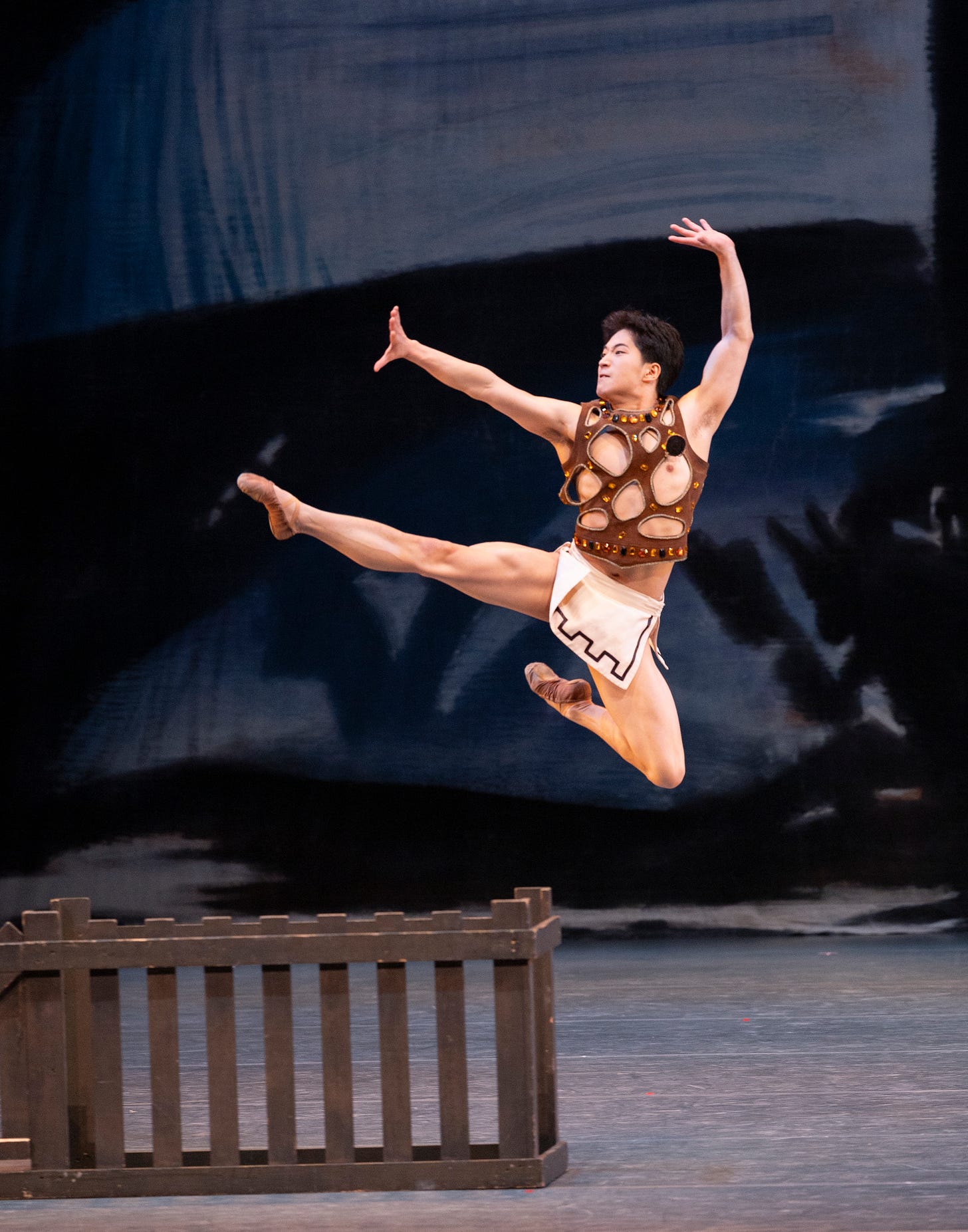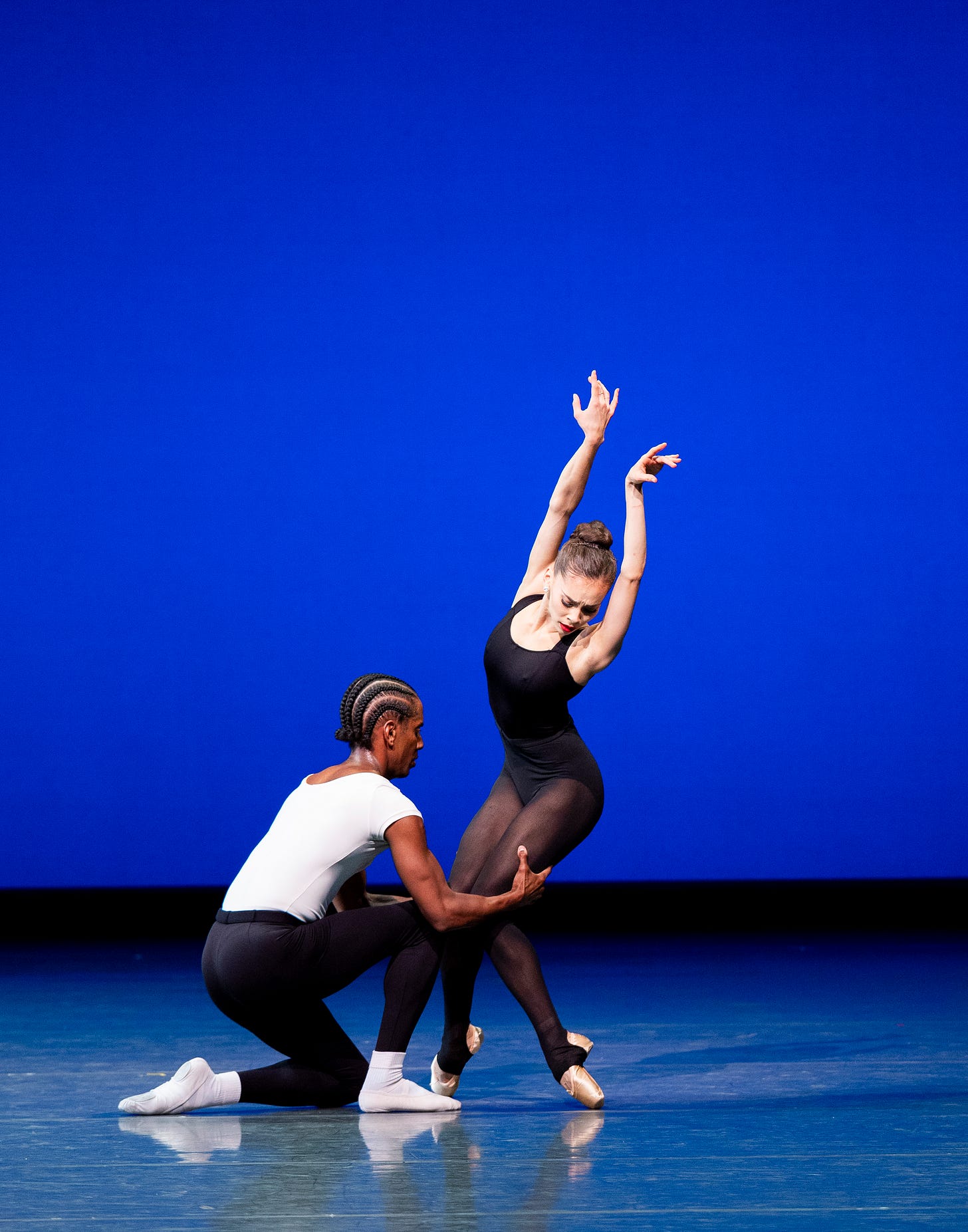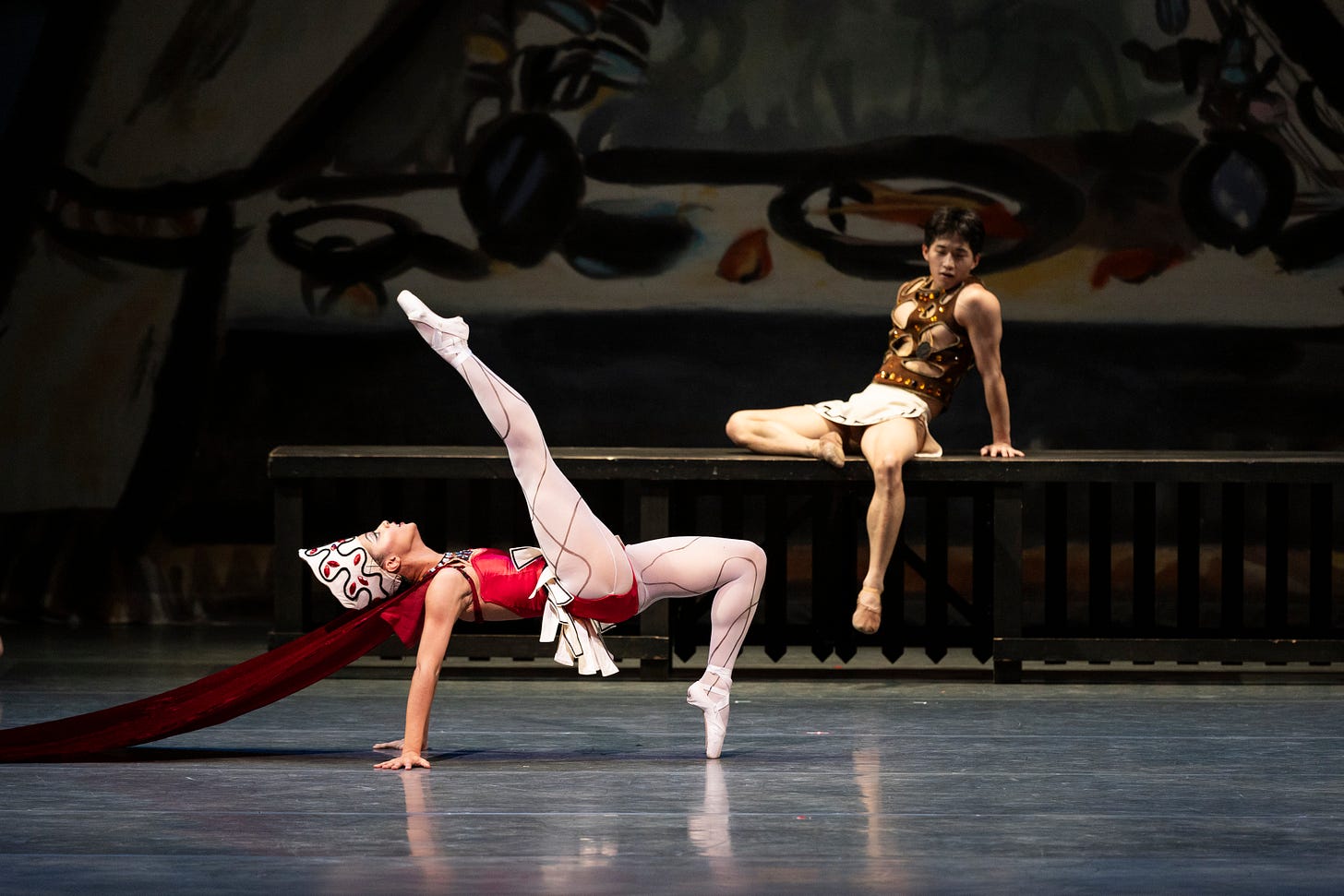
I’m the first to admit that I’m no performance historian. I usually have my strongest response to artworks that move me emotionally. When I write about something, I do research, but sometimes I just want to bathe in the dance’s beauty. But from time to time when I’m at a performance of a classic work from the Western European canon, I like to imagine it’s that classic work’s very first performance, and the audience is experiencing it for the first time. No hype, no reputation, no baggage.
For example, the debut of Igor Stravinsky and Vaslav Nijinsky’s original Rite of Spring, commissioned by Sergei Diaghelev and premiered in Paris in 1913. I’m not sure if it’s really true that the choreographer had to stand on a chair in the stage’s wings to clap out the beats for his dancers that night, but we have many chronicles of the audience’s chaotic response to Stravinsky’s nontraditional score, the boos and jeers that overwhelmed the sound of the music at times, forcing Nijinsky to take action to guide his cast. A French critic at the time called the work a “wreckage of the past, crawling with and eaten away by familiar and monstrous forms of life.” I’d love to have been in that theater, amidst such passionate reaction to a work of art.
15 years later, the Ballet Russe’s impresario, that same Diaghelev, commissioned another modern artwork that didn’t seem to rile the audience quite as much. I’m talking about George Balanchine’s Prodigal Son, with music by Sergei Prokofiev and sets and costumes by French artist Georges Rouault. Balanchine was just 25 years old; and Prokofiev not yet 40, young artists in a city full of young artists and by all accounts, a churning cauldron of ideas. It wasn’t Balanchine’s home, but the city was definitely pivotal to his artistic self, and some say it served as his international launch pad.
Balanchine transformed ballet in the 20th century, in Europe but more particularly in the United States, where he settled in the 1930s and eventually founded a seminal school and a ballet company, New York City Ballet (NYCB). Many of America’s best known ballet companies were spawned by NYCB alums including Seattle’s Pacific Northwest Ballet. And, like artistic Johnny Appleseeds, many of those company founders introduced their communities to Balanchine’s work.
This past weekend PNB opened a new program called All Balanchine, featuring three of the choreographer’s works, including Prodigal Son. Each ballet is from a different period in Balanchine’s career, and if you’re interested in dipping into his artistic evolution, this is definitely a good place to start.
The program opens with Square Dance, originally created in 1957 and revised in 1976. In it, Balanchine blends influences from classical ballet, court dancing and American square dance to create something that feels like an artistic homage to this country that opened its doors to him and so many other immigrants. The program concludes with 1972’s exquisite Stravinsky Violin Concerto, a ballet that physically embodies Stravinsky’s composition.

It’s also an exemplar of the many works Balanchine created with the composer. To me, it’s representative of what I think of as the kaleidoscopic dances Balanchine made: not so much story but embodiment of a musical composition. It took me some time to develop an appreciation for them, but these multi-faceted dances are like gems that reflect images of the music we hear.
At the performance I attended, a Saturday matinee, principal dancer Jonathan Batista and soloists Clara Ruf Maldonado, Luther Demyer and Amanda Morgan all made admirable feature debuts in Stravinsky Violin Concerto. Maldonado, a tiny woman offstage, seems almost as tall as Morgan when she’s dancing onstage, projecting her expressive interpretations out into the huge McCaw Hall. She made a striking partner for the always emotionally generous Batista. The entire cast seemed to relish the choreography’s challenges.
It’s a treat to see dancers in debut performances, and especially to take in emerging standout performers like these. But sandwiched between Square Dance and the Stravinsky was, for me, a particular eye-opener. PNB artistic director Peter Boal has restaged what feels like a fresh interpretation of Prodigal Son, featuring two debuts that thrilled me and my fellow afternoon audience members. That’s saying something about a ballet that’s almost 100 years old and which I’ve seen performed countless times.

Soloist Kuu Sakuragi gave a solidly convincing performance of the titular prodigal son. He’s a boy who defies his father to face the challenges of the outside world, only to wind up literally crawling home to beg forgiveness. Sakuragi, sporting a haircut that made him look about 15 years old, has the technical chops to dance the title role, but more than that, his dramatic chops also stood up to the challenges Prodigal presents. (I’ve seen many PNB veterans dance the role at retirement performances, including James Moore this past June. Lucien Postlewaite and Batista rotate in the role this month, but I didn’t see them opening weekend. Instead, we got thrill of watching a younger dancer get his chance to tackle the role).
Sakuragi ably showed us his character’s longing to experience the unknown world; equally, his humiliation at the hands of his friends, the Goonies, and particularly corps member Audrey Malek as a slinky, sultry Siren. I often see Sakuragi featured in technically dazzling character roles, but he’s not so often called on to portray something more emotionally challenging.
Malek, also debuting in the role of the Siren, was a revelation. We haven’t really seen her in too many featured roles yet, and I have no idea if Balanchine would have welcomed the all-out seductress she brought to the stage, but PHEW, Malek was a temptress who could easily lure Sakuragi’s innocent boy to the dark side, her beauty masking a generous dose of malevolence.
A friend told me she felt Balanchine’s Siren has to endure too much butt patting and breast nuzzling in this ballet, especially for 21st century audience sensibilities. It’s true, Balanchine’s objectification of women is imbued in this work. But Malek seems to pounce on it, showing us the source of many women’s strength when it comes to their interactions with men. Her sinuous charm masked a potentially crippling bite and lent poignancy to Sakuragi’s demise. I’ve seen some excellent dancers in this role (PNB’s amazing Elle Macy, Amanda Morgan’s debut in this production, or such past company members as Ariana Lallone) but I haven’t really felt that frisson of “this is something new”. Bravo to Malek for making this role her own.
I can’t time-travel back to Paris in 1929, and I seem incapable of viewing classic works like Prodigal Son through an early 20th century audience lens. I can only read about the sensibilities and current events of post-World War II/ pre-Great Depression France to try to imagine what was shaping audience opinion or artist motivation back then. I’m much likelier to recognize factors that molded Malek’s 21st century Siren and to see the underpinnings of women’s power that no doubt informed her interpretation.
Malek and Sakuragi are performing Prodigal Son again on Thursday evening, PNB’s traditional “pay what you will” show. You won’t go wrong with any of this weekend’s performances, but if you want to see two dancers who seize Prodigal Son’s nearly century-old material and infuse it with new life, here’s your chance.
PNB’s All Balanchine program continues through Sunday, November 10 at Marion Oliver McCaw Hall.






